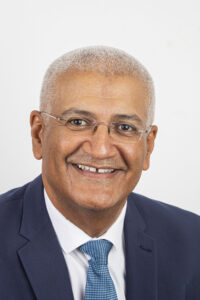Sanlam
It’s important that intermediaries constantly seek ways to ringfence their future revenue. The South African graduate market is relatively untapped and 3.5 times the size of the professional market. This makes it perfect for intermediaries seeking to build their businesses by fostering early relationships with tomorrow’s movers and shakers.

Sanlam has previously offered a Professional Student Package exclusively for students studying for an NQF 8 qualification in a specified field, and only available to those in their fourth year of academic studies. This has now been revised to their second year of study – a market first.
Another unique enhancement that Sanlam has introduced to the package is offering the occupational disability benefit to professional students in their third academic year.
Sanlam heeds the call for graduate student cover
Spotting a gap for graduates, Sanlam has created a Graduate Student Package. This package differs significantly from its Professional Student Package and provides cover on its premier platform for all qualifying NQF 7 (3-year degree or 4-year diploma) students from their second year of study.
These students can also access the Wealth Bonus benefit and take full advantage of compound interest. Unlike the Professional Student Package, the graduate package only offers a lump sum benefit.
Deon Theunis, Intermediary Support Head at Sanlam Risk & Savings, says Sanlam’s Graduate Student Package starts from as little as R90 per month and answers the long-standing call to offer cover for students that don’t form part of the professional student market. “The risk premiums of employed graduates currently on our books is on average 14 times the initial monthly premium of the Graduate Student Package, presenting immeasurable potential for intermediaries.”
The benefits of engaging graduate and professional second-year students
Students, whether they’re professional students (studying for an NQF 8 qualification in a specified field) or graduate students (studying for an NQF 7 3-year degree or 4-year diploma) are traditionally quite a hard market to tap into. They’re often overlooked, despite their high earning potential, low risk and long-term customer value.
Some intermediaries embark on annual campus campaigning to bring fourth and final-year professional students onto their books, which is time and resource intensive. It is now possible to engage professionals and graduates in their second year, and it does not have to be done on campus. Theunis’s suggestion is to speak to their parents.
“Many intermediaries have existing clients with teenage- or young adult children. During annual review season, ensure you discuss their children’s options and explain why cover is crucial for young people.”
He suggests pushing the threefold factors of:
- The advantage of time and compound interest
- The advantage of good health, which means cost-effective premiums locked in early on
- The advantage of early habit formation: Instilling positive financial management skills early on leads to increased confidence
In addition, a major concern for students is student debt. It’s cheaper to insure the life of a young person, which means peace of mind for the whole family.
Theunis adds, “South Africa has a major problem with financial literacy. We believe that by empowering intermediaries to embark on meaningful relationships with young people through critical risk cover, we are future-proofing emerging generations, which is to the benefit of all. We know this is a relatively untapped market with boundless potential. We need to equip our students to pursue their dreams, without the fear of life’s curveballs setting them back.”
Earning trust with students is one of the best possible ways to expand one’s client-base, now and in the future. Helping young people put their financial foundations in place is pivotal, and intermediaries may reap the rewards of their early work for many years to come.


